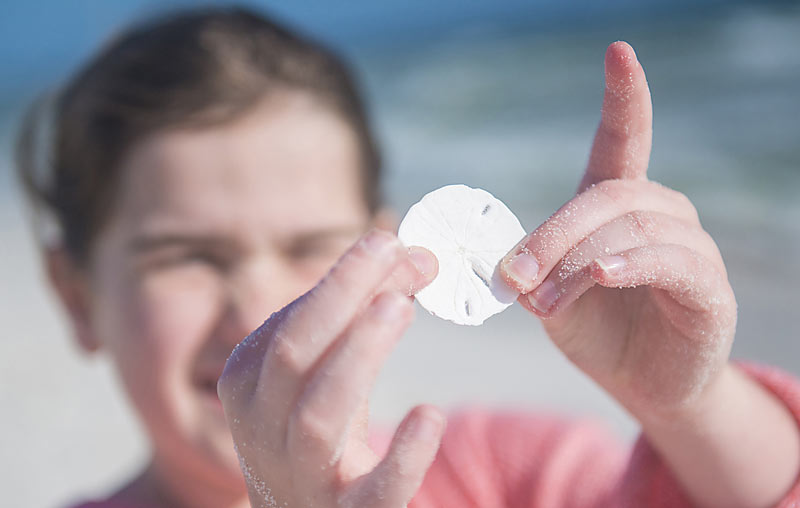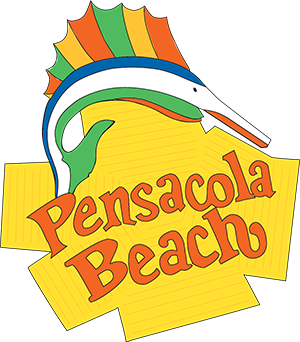Find Your Own Seashells by the Seashore on Pensacola Beach

By Katie King
Pensacola Beach in winter is a beachcomber’s heaven, providing a unique experience unlike any other time of the year.
Many landscapes across the country turn dull and colorless in winter, but not here. Pensacola Beach is at its most vivid during the winter months. When the cooler weather comes in it sweeps away the humidity and clarifies the air in a way that makes our sand, sky and water just pop.
The northern winds flatten the surf, and the winter sun — riding lower in the sky —casts long shadows across the sand, making seashells easier to spot from a distance. Even our quartz crystal sand seems to sparkle more in winter.
For beachcombers desiring to add to their seashell collections, winter is the best time of year to look. The beach is less trafficked too, so it’s possible to find a long stretch of the island all to yourself.
Want to try your hand at sea-shelling? Here are a few tips to get you started:
Go at low tide — thanks to tidal action and low surf, early morning is the perfect time to get out and hunt for those shells that washed up overnight. Winter low tides can push the Gulf waters past the tidal shelf, where shells tend to collect. To find out when low tide is, head to tideschart.com and consult the tide charts.
Check the swash zone – the calm after the storm is another great time to hunt through the broken and small shells that get trapped along the swash zone — where the waves wash over the beach. Tiny lightning whelks and turbans, colorful coquina and fragile baby’s ears are frequently found in the swash zone.
Bring the right gear — you can sometimes find good shells on the beach, but to find the best specimens, you’ll need to venture into the shallow water just offshore. To do that, you’ll need a sand flea rake to sift the shells that are just below the surface and a mesh bag to store your finds. Beautiful, sand-colored shark eyes, bay and calico scallops, gray and white augers, cloudy periwinkles and scatch bonnet are often found in knee-deep water.
Please be humane — only collect unoccupied shells. Mollusks use a lot of energy building their shells. And hermit crabs use a lot of energy stealing them. Sand dollars that are bleached white are fossilized and up for grabs, but those dark gray in color and fuzzy are still alive, so please admire and then put back.
Identify your finds — learning about what shells you found is half the fun! A great resource for identifying local finds can be found at pensacolazack.com.

